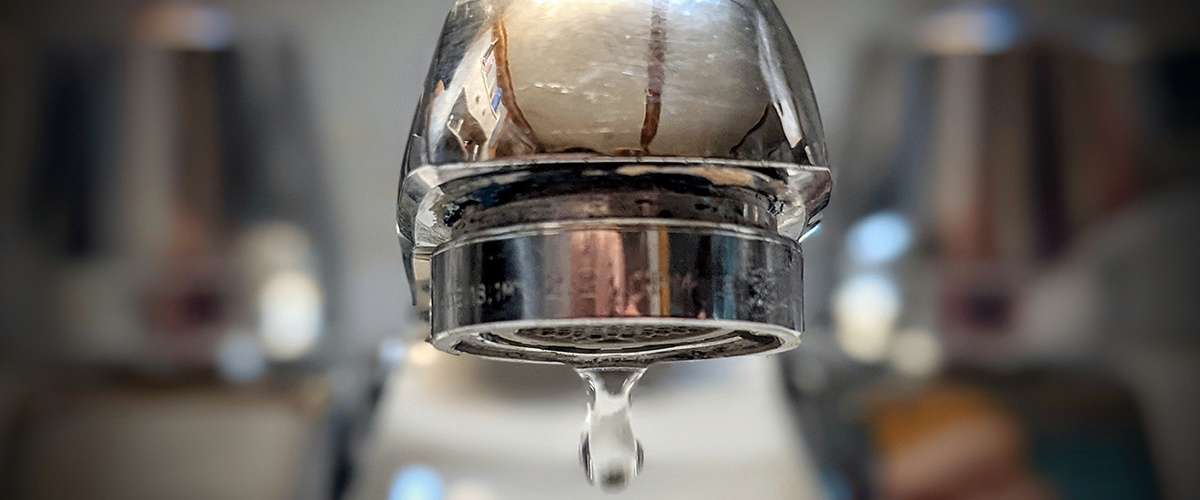Were you hunting for know-how on Should I Repair or Replace a Leaky Faucet??
:max_bytes(150000):strip_icc()/repairing-a-single-handle-disk-faucet-1824878-hero-b3daee9af5174d8f9b9cb4a2582e7140.jpg)
Leaking faucets may feel like a small aggravation, yet their influence exceeds simply the nuisance of the sound. From wasting water to incurring unneeded financial costs and health and wellness dangers, ignoring a dripping tap can cause various effects. In this post, we'll explore why it's essential to resolve this usual household problem quickly and effectively.
Wastage of Water
Environmental Influence
Leaking faucets contribute considerably to water waste. According to the Environmental Protection Agency (EPA), a single faucet leaking at one drip per secondly can squander more than 3,000 gallons of water per year. This not just pressures water resources but also influences ecosystems and wildlife depending on them.
Financial Costs
Enhanced Water Bills
Past the environmental influence, leaking faucets can pump up water expenses considerably. The accumulated wastefulness over time translates into higher utility expenses, which could have been avoided with timely fixings.
Possible Residential Property Damages
Furthermore, extended dripping can cause harm to fixtures and surface areas bordering the tap. Water build-up can trigger staining, deterioration, and even structural problems if left ignored, leading to extra repair prices.
Health and wellness Problems
Mold and Mold Growth
The continuous visibility of wetness from a leaking tap produces a perfect atmosphere for mold and mildew and mildew development. These fungis not just compromise interior air high quality but also position health and wellness threats, particularly for people with breathing conditions or allergies.
Waterborne Conditions
Stationary water in leaking taps can come to be a breeding ground for germs and various other virus, increasing the risk of waterborne illness. Impurities such as Legionella microorganisms flourish in stagnant water, possibly resulting in severe health problems when consumed or breathed in.
Do it yourself vs. Professional Repair
Pros and Cons of DIY Repair Service
While some may try to fix a leaking faucet themselves, DIY repairs feature their own set of obstacles. Without proper understanding and tools, DIY efforts can worsen the concern or lead to insufficient repair services, extending the issue.
Benefits of Hiring an Expert Plumber
Hiring a specialist plumber guarantees that the underlying reason for the leaking tap is attended to effectively. Plumbers have the know-how and devices to detect and repair faucet problems efficiently, conserving time and lessening the danger of further damage.
Step-by-Step Overview to Taking Care Of a Dripping Faucet
Tools Needed
Before attempting to fix a dripping faucet, collect the essential devices, consisting of a flexible wrench, screwdrivers, substitute parts (such as washers or cartridges), and plumber's tape.
Typical Tap Issues and Their Solutions
Identify the kind of tap and the specific issue triggering the drip. Common problems include worn-out washers, rusty valve seats, or faulty O-rings. Describe manufacturer instructions or online tutorials for detailed support on repair work.
Safety nets
Regular Upkeep Tips
To avoid dripping faucets, execute routine upkeep such as cleaning up aerators, checking for leakages, and replacing worn-out components immediately. Additionally, think about setting up water-saving gadgets or upgrading to more efficient fixtures.
Value of Prompt Services
Attending to leaking taps as quickly as they're seen avoids further water waste and potential damage, ultimately conserving both water and money in the long run.
Impact on Residential Or Commercial Property Value
Understanding of Well-Maintained Building
Preserving a home in good condition, consisting of dealing with upkeep concerns like trickling faucets, improves its perceived value and desirability among prospective customers or lessees.
Impact on Resale Value
Features with properly maintained plumbing components, consisting of faucets, command greater resale values in the realty market. Attending to dripping taps can contribute to a favorable perception during home inspections and settlements.
Ecological Obligation
Specific Contribution to Preservation
Taking duty for repairing leaking faucets aligns with more comprehensive efforts towards water preservation and environmental sustainability. Every person's activities jointly make a substantial influence on preserving priceless resources.
Sustainable Living Practices
By prioritizing punctual fixings and taking on water-saving habits, individuals contribute to sustainable living methods that profit both existing and future generations.
Verdict
Resolving a trickling faucet exceeds plain benefit; it's a necessary step towards preserving water, minimizing monetary costs, and protecting health and wellness and residential or commercial property. Whether through do it yourself repair work or expert help, taking action to take care of leaking taps is a tiny yet impactful way to advertise liable stewardship of resources and add to a healthier, much more sustainable future.
Why Are My Faucets Dripping (And Can I Fix it Myself)?
Causes of a Dripping or Leaking Faucet
Whether you’re hearing drops of water falling and hitting a sink, or noticing water ooze out from the base of the spout, you shouldn’t ignore a dripping or leaking faucet. And, the good news is, sometimes you can fix the problem yourself.
In this article, we’ll review a few common causes of dripping and leaky. We’ll also walk you through some basic ways to find the problem and handle it without calling anyone — and let you know when to call in a pro.
But, no matter what the cause, or whether you can handle it on your own, the sooner you address it, the better.
Each drip may be a tiny amount of water. But, they all add up quickly. According to the U.S. Geological Survey, one faucet losing one drop every 20 seconds — five a minute — wastes around a liter of water every day, and 173 gallons a year.
Add in more than one in your house, and it’s a lot of water to waste. So, we’ll help you get to the bottom of things quickly.
Four Reasons Your Faucet May Be Dripping
Aerator is Damaged or Unseated Valve Seat is Corroded O Ring is Loose or Worn Out Part of the Assembly is Loose Aerator is Damaged or Unseated
If you unscrew the end of your faucet, you’ll find the aerator. It’s the little stem piece with a screen on it that shuts off the water circulation.
If it’s damaged, or if it’s not sitting right, it will allow water to pass through.
Valve Seat is Corroded
Next is the valve seat, which is connected to the washer. If the washer wasn’t in place correctly, then it could have ground against the seat. Over time, this damages the valve seat.
The problem could also be corrosion: Over time, the part has worn out, and it’s now allowing water to pass through.
O Ring is Loose or Worn Out
Since the o ring is only a small rubber gasket, it’s a common reason why the faucet is dripping. You’ll find it at the base of the faucet, and it’s there to keep water from coming out where it’s not supposed to.
However, it’s common for the o ring to wear out over time. When it does, you’ll notice a drip.
Part of the Assembly is Loose
So far, we’ve looked at a few small, specific parts. But, the problem could be anywhere in the assembly if something’s out of place.
Even if a part isn’t damaged, over time, it may have become loose or dislodged. It could be the parts we mentioned, or the aerator at the tip of the faucet, the stem itself,
Can I Fix a Leaky Faucet Myself?
Depending on the problem, and how handy you are, there’s a chance you can fix a leaky faucet without calling a professional. But, you do run the risk of making the problem worse.
If it’s a small drip, you can certainly try a few troubleshooting tactics. We’ll walk you through them in a moment.
But, no matter what, your first step should be shutting off the water coming into the faucet. You should find a shutoff valve under the sink on the pipes leading to it. Turn each one clockwise until they close tightly.
Next, make sure you have the right tools for whatever you’re attempting. It’s tempting to make do with what you have. But, you need the right ones for a reason: You’re often dealing with small parts that can break if you handle them carelessly.
If you’re feeling confident, here are some places to start.
Items Near the Tip of the Faucet
A few of the parts we mentioned — particularly the valve seat and washer — are located at the tip of the faucet where the water comes out. They’re easy to access, making it a good place to start.
Check the O Ring
To check the o ring, you’ll need to take off the spout at the base. It’s easiest on kitchen sinks with long spouts, versus the smaller, bulkier base on most bathroom sinks.
Either way, this can be tricky, so do it carefully and don’t force anything. If it’s not coming right off, you’re much better off calling in a pro than possibly breaking something.
For a kitchen sink, there’s usually a nut or coupling assembly at the base of the spout. These often slide off easily without using any tools.
Once you’ve disassembled those parts, gently but forcefully twist off the spout.
Then, you can see the o rings. There should be two of the rubber gaskets on the base. If they look worn or damaged, replace them, and see if that solves the problem.

Do you appreciate reading up on What Causes Leaky Faucets & How To Fix Them? Write feedback down below. We would be pleased to know your thoughts about this blog post. We hope to see you back again in the near future. Sharing is good. Helping people is fun. Thank you for taking the time to read it.
 Hallie Eisenberg Then & Now!
Hallie Eisenberg Then & Now! Anthony Michael Hall Then & Now!
Anthony Michael Hall Then & Now! Erik von Detten Then & Now!
Erik von Detten Then & Now! Monica Lewinsky Then & Now!
Monica Lewinsky Then & Now! Teri Hatcher Then & Now!
Teri Hatcher Then & Now!